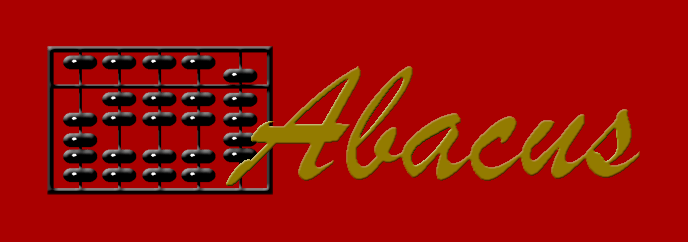
Abacus Educational
Services
Services
- *** NEW ***
- Online Education
- What is Correct English?
- Acing the SAT
- Homeschool Classes
- Grammar Resources
- SAT Grammar Errors
Site Map
- AES Home
- Featured Resource
- Acing the SAT
- Education Journal
- Grammar Playsheets
- Grammar Resources
- Vocabulary tips
- Vocabulary Quiz
- Software
- Online SAT Resources
- SAT Grammar Errors
- Books on the New SAT
- Vocabulary Books
- Vocabulary List
- Vocabulary Crosswords
- Homeschooling
- Homeschooling
- Homeschooling Classes
- AP exam preparaion
- Homeschooling Books
- Homeschool on the Web
- Homeschooler Central
- Children's books
- The Wind in the Willows
- The Golden Age
- Language Reference
- Common Errors
- Subject/Verb mismatch
- Number (singular/plural)
- Case, declension
- Misplaced Modifiers
- Metaphors
- Mixed Metaphors
- Confused Verbs
- Sentence Fragments
- Run-on Sentences
- Parts of Speech
- Verbs
- Nouns, Pronouns
- Prepositions
- Adjectives
- Online Education
- Studying Online
- Online Higher Education
- Writing Class Online
- Online degrees
- Accredited degrees
- Recommended reading
- Children's books
- Cat Flinging
- Motorscooter Solution
- Wistful Vistas
- Thailand Escape
- Contact us
- Graded Links
Grammar Errors Tested for on the SAT
The grammar points tested on the SAT are relatively few, easily defined, and well worthy of study. The Educational Testing Services avoids grammar points that are disputed or questionable and for the most part all good quality academic English adheres to these SAT grammar guidelines fairly closely. It is, however, quite remarkable how frequently these rules are broken and ignored in the poor grammar and writing style commonly found in online English grammar sites, SAT preparation sites, and other web resources purporting to provide English language instruction and reference. Our SAT errors found on educational websites page is quite revealing and is growing all the time.- Subject/verb agreement.
- Noun/pronoun or noun/noun agreement, including synesis in anaphoric references. (a construction in which an expected grammatical agreement in form is replaced by an agreement in meaning, as in The crowd rose to their feet, where a plural pronoun is used to refer to a singular noun.) Such usages are regarded as mistakes on the SAT but this decision has been questioned by many academics.
- Pronoun case. Correct use of I/me, he/him, who/whom. See Pronoun Declention and Pronoun Case.
- Pronoun reference problems and ambiguity. See Grammar Playsheet 2.
- Verb tense. Consistent and appropriate tenses are required by the context. This can be tricky. See Verb Tenses.
- Verb voice. Passive voice is simply to be avoided on the SAT. Use active voice even when passive is better.
- Clauses: run-ons and sentence fragments. The comma splice.
- Idiomatic usages. Usually a case of choosing the correct preposition. See the Preposition Matching Playsheet.
- Parallelism. Parallel constructions which aren't really parallel are not always easy to spot. See the Parallelism Playsheet.
- Misplaced Modifiers. Usually an ambiguous reference to something or a reference to something that isn't there at all. See the Ambiguous and Missing Antecedents Playsheet and the Reference Problem Playsheet.
- Parallelism in comparisons. The apples and orange comparison: "I like Bronte much better than the novels of Austen."
- Confused words. illusion, allusion -- that lot. See the Misused Words Playsheet.
 Advanced Writing text for the student with little time and a low boredom threshold
Advanced Writing text for the student with little time and a low boredom threshold